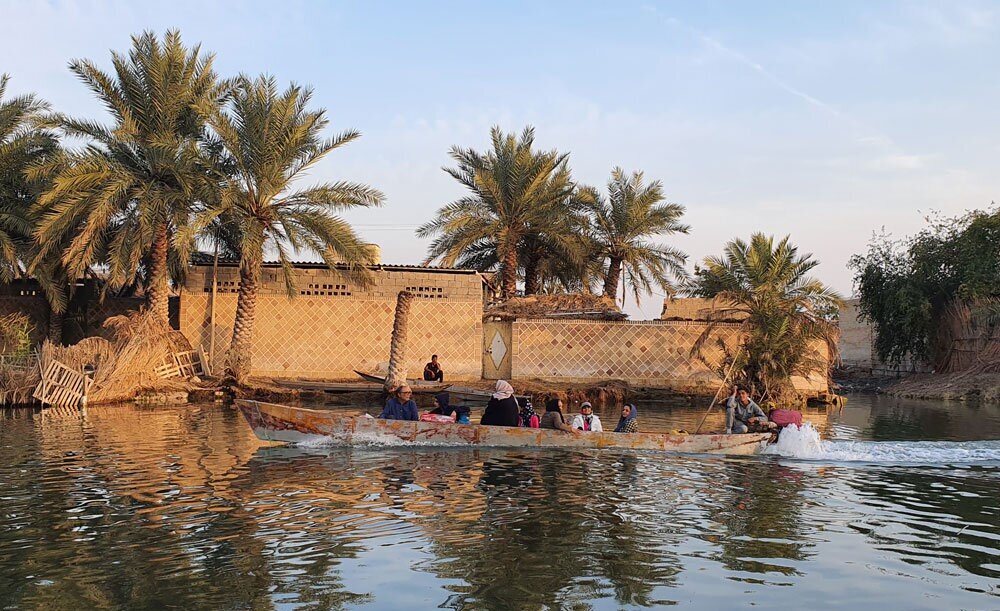Shadegan Wetland's development in the limelight

TEHRAN - Iran has a large capacity for the development of marine tourism with vast water areas in the north and south as well as many wetlands.
The government has well understood this potential, therefore, during his provincial visit to Khuzestan, President Ebrahim Raisi issued an order to prepare a tourism development document for Shadegan Wetland, which is an important step toward sea-oriented development.
Iran is connected to the Caspian Sea from the north and the Persian Gulf and the Oman Sea from the south. In fact, it is a sea-oriented country. With proper planning, this potential can be used in various economic and tourism sectors.
Seven provinces of the country, namely Gilan, Mazandaran, Golestan, Bushehr, Khuzestan, Hormozgan, and Sistan-Baluchestan are adjacent to the Caspian Sea, the Persian Gulf, and the Oman Sea and have long beaches.
In addition to these water areas, a large part of the country is covered by all kinds of wetlands, which provide a very good opportunity for the development of tourism and sustainable livelihood for people.
But in spite of all these potentials, it seems that this capacity has not been used in the country as it should be, while Iran has unique areas that, if the ground is provided for attracting tourists, will be a stable source of income for the country.
One of these wetlands that has the potential to develop the tourism industry is Shadegan Wetland in Khuzestan.
Shadegan wetland covers 530,000 hectares, 400,000 hectares of which have been designated as a Ramsar site (defined by the Ramsar Convention for the conservation and sustainable use of wetlands, recognizing the fundamental ecological functions of wetlands and their economic, cultural, scientific, and recreational value).
On April 27, President Ebrahim Raisi ordered officials in Khuzestan province to draft a plan for the development of Shadegan Wetland.
He urged environmental officials to prepare the document within a month, IRIB reported.
The wetland feeds on Marun and Karun rivers both crossing Kohgiluyeh-Boyerahmad province, but after dam construction over the Karun River, the wetland went dry not receiving its water right.
The recent rainfall has filled 70 percent of Shadegan International Wetland in the southwestern province of Khuzestan, the head of the Shadegan Department of Environment, Rahim Majdami, has said.
The water condition in most areas of Shadegan wetland is expected to improve with continuous rainfall compared to last year, he further said, IRNA reported.
With the cooling temperature in the regions of the northern orbit and Siberia, the Shadegan International Wetland will be host to migratory birds, Majdami stated, adding, the DOE forces are dispatched to patrol the area and protect the migratory aquatic species.
The Convention on Wetlands is an intergovernmental treaty that provides the framework for the conservation and wise use of wetlands and their resources.
It was adopted in the Iranian city of Ramsar in 1971 and came into force in 1975.
Due to insufficient rainfall and recent droughts, as well as non-implementation of some of the programs of the Department of Environment to protect wetlands, now about two million hectares out of the three million hectares area of the country's wetlands are dry and turned into sand and dust spots.
This year, the country experienced the driest autumn in the last 50 years, but this condition was partially compensated by the winter rains and slightly improved the condition of water resources.
But due to the fact that Iran is located in an arid and semi-arid area with about one-third of the world's average rainfall, this rainfall has not compensated for the country's lack of water.
An official with the Department of Environment has said comprehensive management plans have been prepared for 44 wetlands in the country.
The unique characteristics of wetlands, including groundwater control, climate change adaptation, the livelihood of local communities through fishing, livestock grazing and agriculture, natural water purification, purification and absorption of pollutants, and nature tourism have made sustainable management and protection of wetlands essential for humans, ISNA quoted Jaleh Amini as saying.
MG
